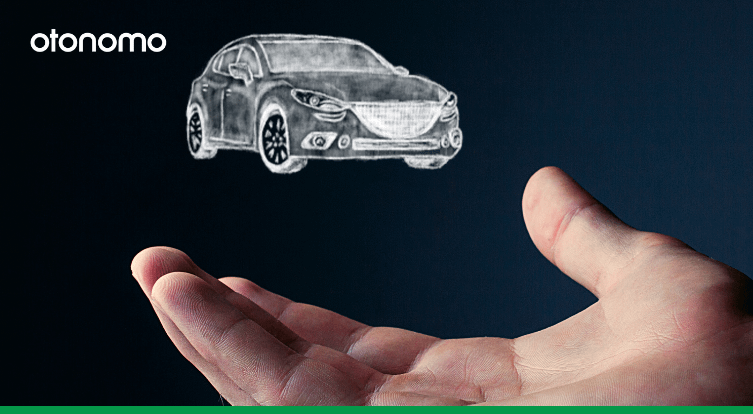Traffic analysis needs data – and lots of it. Traditional data sources may include stationary traffic counters, sensors, or cameras, but data from these devices are often insufficient, as they are relegated to specific locations and do not flow within traffic. It has become increasingly popular for traffic analysts to utilize floating car data (FCD), also called “crowd” car data, as a means to analyze traffic. Raw FCD provides timestamped geospatial locations of vehicles. For years, floating car data has been used for many use cases, including mapping and navigation.
But the FCD data can be improved with additional enriched, harmonized connected vehicle data. These additional layers from data from dozens of sensors to give context to simple X/Y coordinates. This layered, real-time traffic data improves traffic analysis due to its holistic view of vehicle, traffic, and external conditions.
What is floating car data?
Raw floating car data provides a geolocation of a vehicle at a certain point in time. Speed and direction of the vehicle can be extrapolated using multiple points of data.
Raw FCD does not provide in-vehicle specifics regarding engine status or gear position. It also excludes contextual data regarding hazards or street signs. Enhanced vehicle data can add these parameters to FCD.
How is FCD collected?
FCD can be obtained by either mobile phone data (floating cellular data) or automotive data. Although mobile phone data is cheap and virtually ubiquitous, mobile phone data is neither accurate nor precise. Cellular phone data comes from pedestrians, cyclers, drivers, or passengers of public transportation. This “noisy” data does not indicate individual vehicles with the same accuracy of automotive data. Connected vehicles also have much more precise GPS than mobile phones, making automotive data more useful for traffic analysis. Connected car data is available in real-time, and offers precise location information, as well as several other data points.
Why should traffic analysts look beyond raw FCD?
Raw floating car data offers a point in time and space, as well as speed, and direction. While these parameters are significant in traffic analysis, adding data from vehicle sensors can indicate causal factors (like weather and road hazards or vehicle health issues), intention, and behavioral catalysts. This data can help traffic analysts explain why drivers are speeding up or slowing down, and what their cars are experiencing.
Enriched, real-time traffic data from connected vehicles enhances raw FCD with additional data parameters such as sensor data, engine status, tire pressure, hazard data, weather data and much more. This expanded data can provide better data analysis, which leads to more actionable insights.
Here are 3 layers of connected vehicle data that can help to contextualize real-time traffic data for better traffic analysis.
What are the 3 Layers of Connected Vehicle Data for Traffic Analysis
| Trips Data | Shows speed, location, origins and destinations of vehicles |
| Hazard and Weather Events Data | Explains conditions such as inclement weather, vehicle breakdowns, and road hazards that impact traffic patterns |
| Roads Signs Data | Identifies static and dynamic road signs |
What is Trips Data?
Extrapolating the origin and destinations of vehicles from raw FCD can involve laborious calculations. Otonomo’s algorithms calculate characteristics of vehicle trips, including information on origin and destination, average or maximum speeds, duration, and distance traveled. Analysts can gain insights on driver behavior without the added steps of harmonizing and deriving origins and destinations from raw FCD.
- Quickly identify anomalies in traffic by highlighting temporarily popular destinations, such as cultural events, gatherings, or protests.
- Gather location intelligence by identifying vehicle stops at points of interest en-route to destinations to better plan retail development, fuel or charging stations, public transportation, and transportation infrastructure.
- Analyze common trip origins and destinations to improve urban planning.
- Improve route planning and navigation apps by identifying trip patterns in traffic data.
- Anticipate traffic patterns based on trips data to adjust dynamic traffic signals or send alerts via navigational apps for better traffic management.
What is Weather and Hazard Events Data?
Real-time hazard and weather data enables traffic data analysts to pinpoint traffic patterns arising from hazards, traffic accidents, or inclement weather, helping them see the whole picture when it comes to traffic congestion and road safety.
- Quickly identify the impact of weather related traffic anomalies with real-time data indicating heavy rain or fog.
- Highlight congested or slow moving traffic by detecting accidents and breakdowns using real-time vehicle data.
- Use real-time data from gear positions and turn signals to identify hazards and road conditions contributing to slowing or stalled traffic.
- Use real-time traffic jam tail data to identify traffic jams and make actionable insights such as re-routing or navigation app alerts.
- Quickly identify accident locations and specifics with in-vehicle data to decrease response time and increase preparedness of emergency teams.
Road Signs Data
Understanding the instructions provided by road signs to drivers gives context to traffic patterns. By using road signs data obtained from Advanced Driver-Assistance Systems (ADAS) of connected cars, traffic data analysts can see the effect of both static and dynamic road signs on traffic in real time.
- Identify speed limits, detours, and other rules governed by road signs that dictate traffic behavior.
- Contextualize changing traffic patterns by understanding variable signage affecting traffic flow, such as temporary road changes, construction work, and variable speed limits.
- Use road sign data to pinpoint damaged or missing signs to identify resulting traffic problems.
- Analyze the effect of weather conditions resulting in poor visibility of road signs, and alert drivers of upcoming road signs to promote road safety.
- Improve route planning and navigation by sending alerts to drivers regarding changes in dynamic road signs.
Expanding floating car data with rich, layered automotive data from connected vehicles provides a greater context of traffic, so analysts can extract more valuable insights and propose actionable recommendations.
Want to learn more about Otonomo’s Rich Data?
Otonomo allows data consumers to access rich, harmonized, aggregated data from multiple OEMs in real time with a single integration. Otonomo provides multiple data attributes from dozens of vehicle sensors, giving analysts the opportunity to make deeper insights.
Download one of our datasheets or speak to a data expert.






